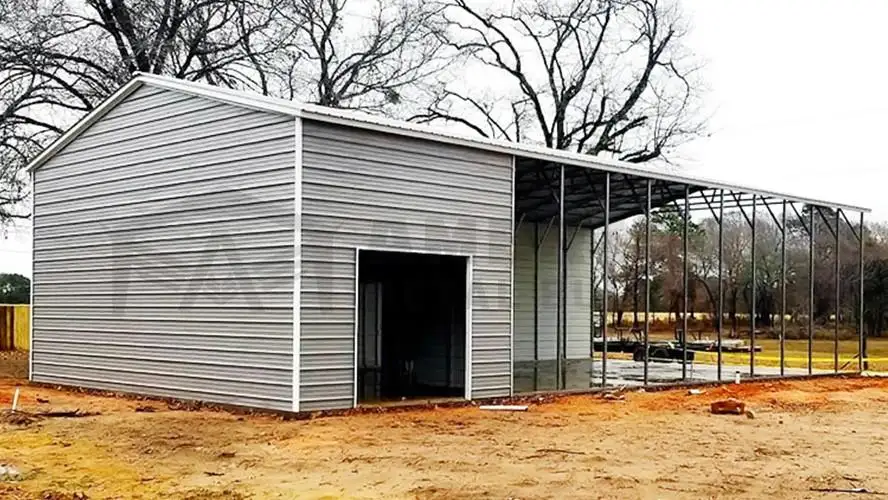The Competitive Benefit of Steel Structures: Why Choose This Superior Option
Steel buildings have actually arised as a compelling selection in the world of construction for a wide range of reasons. The affordable edge that steel structures hold prolongs far past their preliminary appeal, making them a recommended choice for those seeking long life and versatility in their building projects.
Sturdiness and Longevity
In the world of resilience, long life and building are fundamental elements that emphasize the value recommendation of steel structures. Steel is renowned for its robustness and capability to withstand different ecological conditions, making it an optimal selection for resilient frameworks. Unlike conventional products like timber or concrete, steel does not warp, fracture, or rot over time, making sure that a steel building continues to be structurally sound for decades.
One essential element adding to the sturdiness of steel structures is their resistance to parasites such as termites, which can cause substantial damages to wood structures. Steel is likewise non-combustible, minimizing the threat of fire damage and increasing the security of occupants. Furthermore, steel structures call for marginal upkeep contrasted to various other construction materials, saving both money and time in the future.
Additionally, innovations in steel production modern technology have actually better boosted the longevity of steel buildings by improving corrosion resistance and structural integrity. With proper care and maintenance, a sound steel building can last well over 50 years, offering a reliable and long lasting solution for different construction requirements.
Cost-Effectiveness
With its various economic benefits, steel as a building product uses an engaging cost-efficient service for numerous construction tasks. The cost-effectiveness of steel buildings stems from a number of crucial aspects. To start with, the preliminary expense of steel may be more than some standard products, yet the lasting cost savings are considerable. Steel frameworks need marginal upkeep, lowering repair service and replacement expenses with time. Additionally, steel is very durable, which converts to lower insurance costs due to decreased risk of damages from elements such as fire, bugs, and all-natural calamities.
Steel buildings are additionally energy-efficient, allowing for savings on heating and cooling expenses - steel buildings. Generally, the cost-effectiveness of steel buildings makes them a wise investment for various building needs.
Flexibility in Design
The adaptability of steel as a structure product permits for a broad array of cutting-edge style possibilities in building projects. Steel buildings supply unmatched adaptability in layout, making them a recommended selection for designers and contractors.
Steel's adaptability additionally enables for personalization to meet certain style needs. Whether it's bent roof coverings, complex facades, or unique geometric shapes, steel can be formed to bring essentially any kind of design idea to life. Furthermore, steel structures can be conveniently broadened or modified, supplying future adaptability for adapting to altering requirements.
Additionally, the use of steel in building and construction permits lasting style methods. Steel is extremely recyclable, minimizing ecological influence and advertising environmentally friendly building and construction. Its sturdiness and resistance to rust make certain that steel buildings maintain their aesthetic allure and architectural honesty for many years to come. Inevitably, the versatility of steel in style not just boosts the visual allure of structures yet likewise adds to their long life and performance.

Sustainable Building Practices
Building upon the foundation of adaptability in layout, lasting construction methods in steel buildings play a critical role in mitigating environmental impact and promoting long-lasting environmentally friendly solutions. When steel buildings reach the end of their lifecycle, the steel components can be recycled and used in new construction projects, minimizing the demand for raw materials and reducing waste. Furthermore, the energy effectiveness of steel buildings contributes to sustainability efforts.

Rapid Building Timeline

Moreover, the streamlined procedure of setting up steel frameworks minimizes building time significantly. The simpleness of steel structure layout and the ease of assembly add to faster job completion, making it an read this excellent selection for customers with next page time-sensitive demands (steel buildings). Furthermore, the capability to function on various parts at the same time, such as site prep work and structure building and construction alongside steel construction, more accelerates the general building timeline
Conclusion
To conclude, steel structures use a competitive advantage because of their longevity, cost-effectiveness, flexibility in style, lasting building and construction techniques, and rapid building and construction timeline. These factors make steel buildings an exceptional choice for different construction tasks, providing long-lasting benefits and worth. Picking steel buildings can result in boosted efficiency, performance, and sustainability in the building and construction sector.
Unlike conventional materials like wood or concrete, steel does not warp, split, or rot over time, making sure that a steel structure continues to be structurally audio for decades.
The flexibility of steel as a structure material allows for a broad range of ingenious design possibilities in building and construction projects.Structure upon the structure of convenience in design, sustainable building techniques in steel buildings play a crucial function in mitigating ecological influence and advertising long-term green solutions. When steel buildings get to the end Visit This Link of their lifecycle, the steel parts can be reused and used in new building jobs, lowering the demand for raw materials and reducing waste.In final thought, steel structures supply an affordable advantage due to their sturdiness, cost-effectiveness, adaptability in layout, sustainable building and construction practices, and quick building timeline.